There is nothing more frustrating than removing dishes from the dishwasher only to find a mountain of wet, water-stained plates. You may as well wash the dishes by hand, wouldn’t you? If you’re worried that your dishwasher isn’t drying your dishes, you need not panic. If your dishwasher isn’t drying your dishes correctly, this article will show you the six most common reasons why and provide you some simple solutions to solve them.
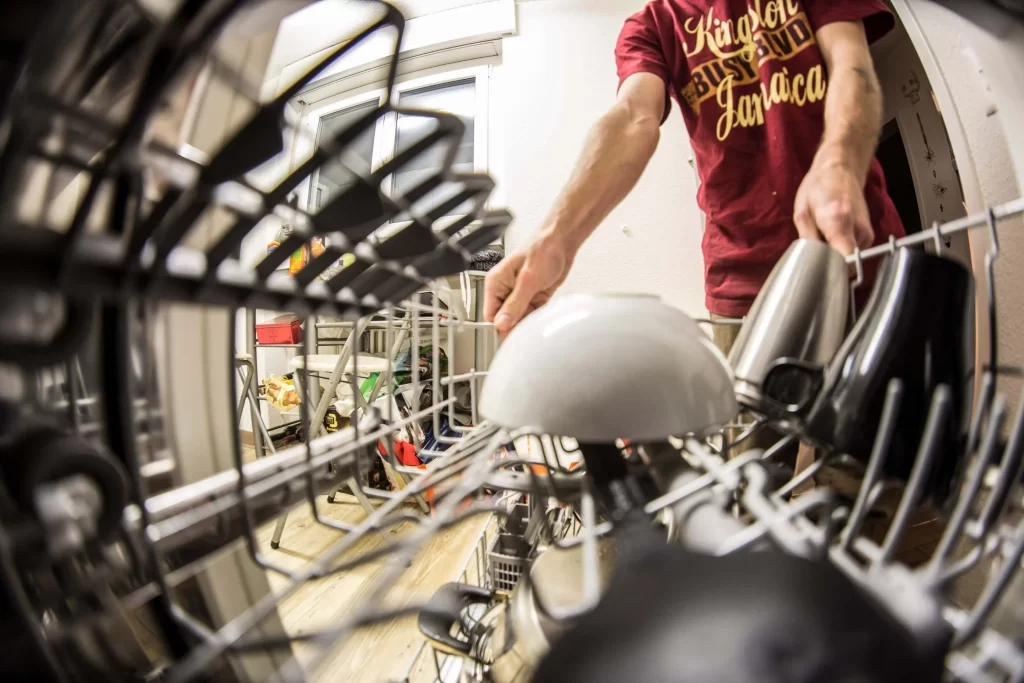
Why Is My Dishwasher Not Drying?
1. Poor Dish Placement
Why, after putting your dishes through the drying cycle, do they still come out damp? Dish placement gone wrong can be the reason. Your dishes will get damp if you overfill your dishwasher or pack the plates too close together.
Pro Tip: To promote better airflow while the dishes dry, space them out a little on the racks.
- Dishwasher-safe plastics, glasses, bowls, and cups belong on the top rack.
- Pots and pans, serving bowls, and other bigger things should all belong on the bottom rack.
- The side racks can hold big objects like chopping boards and plates.
- For safety, knives should be positioned with their blades facing down, while forks and spoons should be arranged with their handles facing down. So that the cutlery doesn’t cling together, mix several kinds.
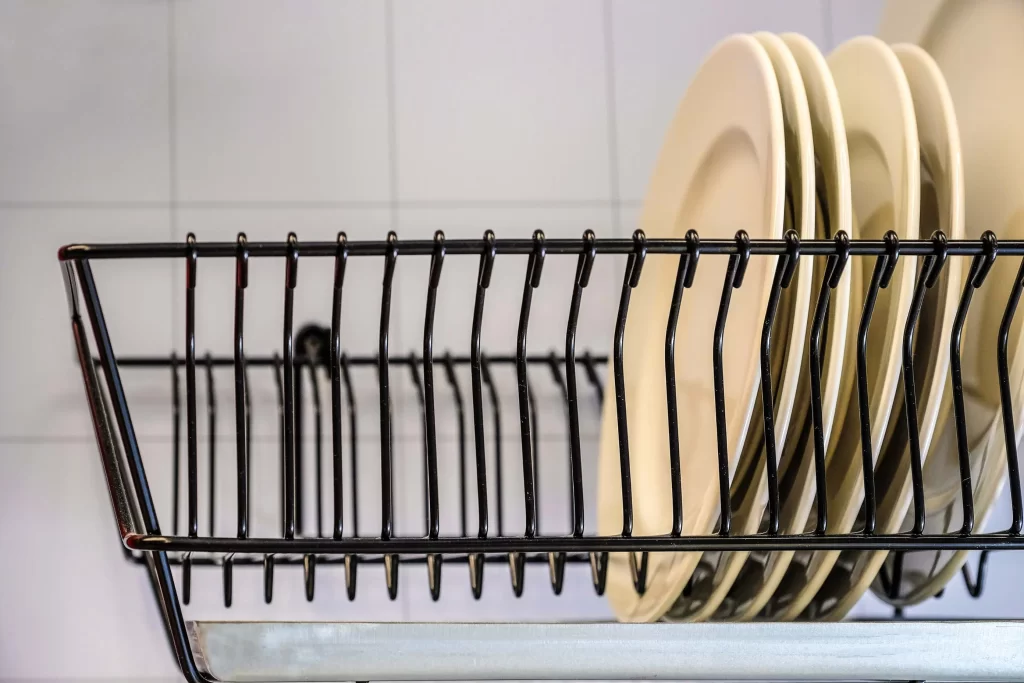
2. Incorrect Cycle Settings
Your dishwasher will probably forego the hot dry cycle when it is set to Quick Wash or Extra Express in order to save electricity.
Air Dry: This option dries dishes more quickly and with less energy, but some dishes—like those coated with Teflon or plastic—may not dry all the way.
Heat Dry: Dishes are dried entirely with this setting using a heating element. Usually the best way to get dishes totally dry, it takes longer and requires more work.
Pro Tip: To assist the water evaporate more quickly if you use heat to dry dishes, consider opening the dishwasher door after the rinse cycle.
3. Low Rinse-Aid Levels
During the last rinse cycle, a useful tiny material called rinse aid helps water condense and roll off your plates. Your dishes might be sticking to extra moisture if your rinse aid reservoir is empty or running low.
Check the dispenser: Usually found on the inside of the door is the rinse aid dispenser. Check to be sure it is filled. Use this chance to verify that the rinse aid compartment’s cover opens and closes properly.
Pro Tip: Your dishes could seem dryer if you use rinse aid.
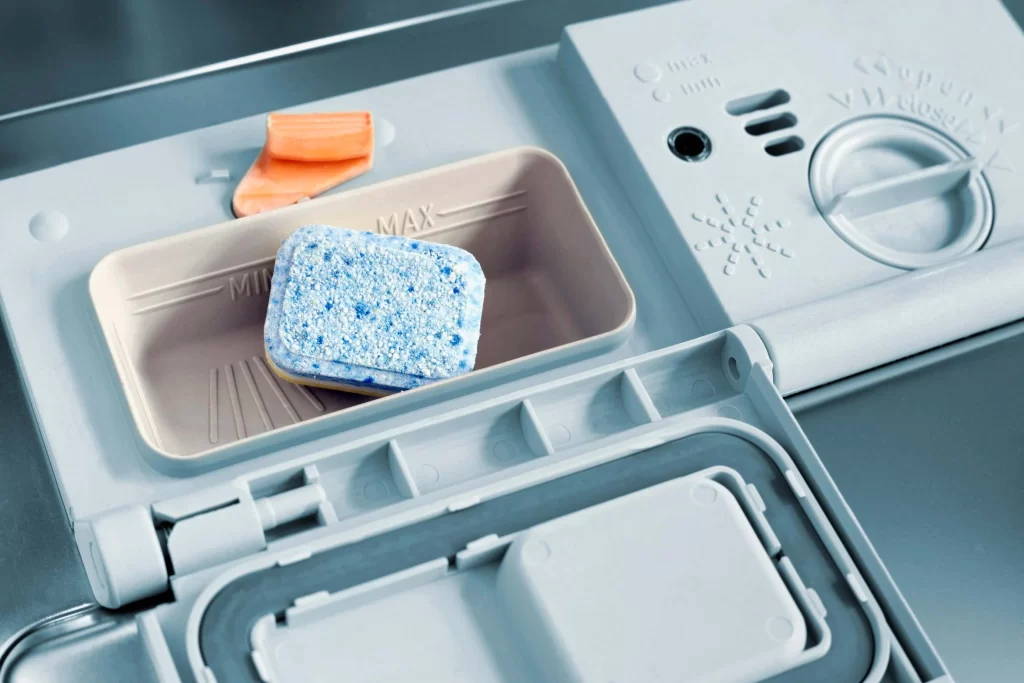
4. Blocked Vent
If you’ve looked over the other things and your dishwasher still won’t dry your dishes, the appliance is probably the problem. When the dishwasher is drying, a vent on most of them discharges hot air. Soggy dishes are the consequence of improper circulation of hot air caused by a clogged vent.
View the vent. The dishwasher’s rear or bottom often houses the vent. Verify that nothing else, including trash, is blocking it.
Pro Tip: To avoid obstructions, clean the vent often.
5. Faulty Heating Element
The dishes are heated along the drying cycle by the heating element. Should it break down or burn out, your dishes won’t dry out correctly. It will take a multimeter to determine whether the heating element is operational.
- Turn off the dishwasher’s electricity before using it.
- Track down the heating element: Usually found toward the bottom of the dishwasher tub is the heating element. For particular instructions, see your owner’s handbook.
- Analyse the component Look for visual damage, including burns or breakage, on the heating element. If nothing seems wrong, remove the heating element and touch or attach the multimeter probes to the two terminals. The value ought to fall between 15 and 30 ohms. A qualified dishwasher repair specialist will have to replace the heating element if the multimeter goes to zero or displays nothing at all.
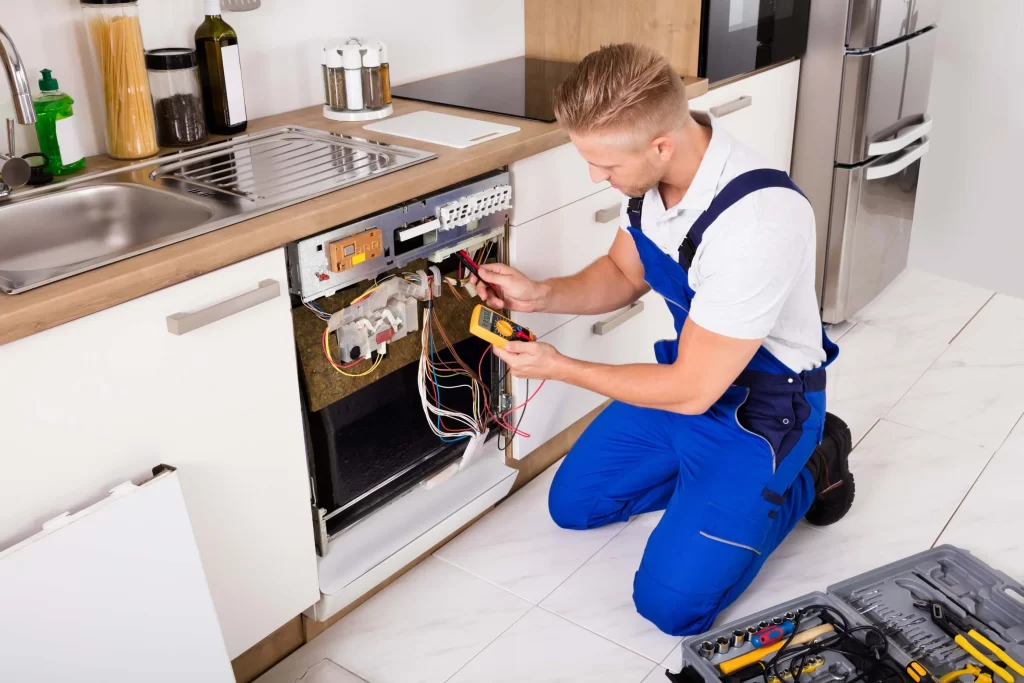
6. Malfunctioning High-Limit Thermostat
An overheating safety feature of your dishwasher is the high-limit thermostat. Should it malfunction, it might stop the heating element from operating as it should, which would result in the dishwasher running at a lower temperature and damp dishes.
Consult a professional: If you feel your high-limit thermostat is faulty, you should contact a licensed appliance repair specialist.
Pro Tip: As the high-limit thermostat is a safety feature, never attempt to fix it yourself.
How Do You Get Dishes Dry In The Dishwasher?
- Ensuring Correct Loading: To facilitate air circulation, leave room between the dishes in your dishwasher.
- Select the Correct Cycle: Use a hot dry cycle to completely dry dishes if necessary.
- Use Rinse Aid: Putting rinse aid in your dishwasher can help it dry faster and help avoid water stains.
- Clean Vents: Verify that your dishwasher’s vents are not obstructed in any manner.
- Examine the heating component. Inspect the heating element for any harm and swap it out if required.
- Speak with an Expert: Speak with a trained appliance repair specialist if you think your high-limit thermostat is broken.
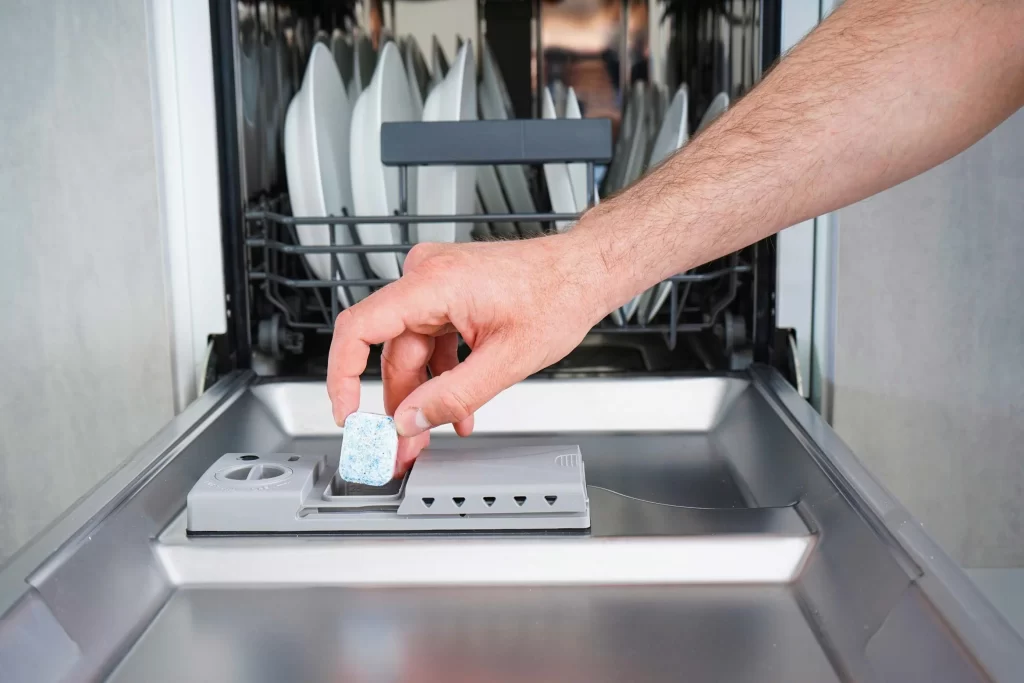
How Do You Tell If a Dishwasher Heating Element Is Broken?
- Even on “heat dry” setting, dishes never get hot during the cycle.
- Checking the heating element visually will reveal any cracks, discolorations, or other problems.
- Check to see if the Sanitize LED is solid after running a cycle. It may be functioning based on this. One reason a Sanitize LED flashes might be a malfunctioning heating element.
- A clicking or buzzing noise during a cycle may indicate an issue with an element.
- Dishes arrives cold, not blazing hot.
- It’s preferable to get in a qualified appliance repair specialist if you think the heating element is the problem. They can correctly identify the issue and, if needed, replace the malfunctioning component to restore your dishwasher to its best drying state.
Tips For When A Dishwasher Is Not Drying
- Ran another cycle. Dishes may occasionally dry more completely by being ran through a second drying cycle.
- To raise the drying performance of your dishwasher, use rinse aid.
- To ensure the dishwasher water reaches 120°F, run a hot water tap in the sink before turning it on.
- After the cycle is over, leaving the dishwasher door open slightly might assist speed up the drying process.
- Inspect the filter. A blocked filter might prevent water from draining correctly, leaving damp dishes.
- Check the water pressure. Drying of your dishwasher might be impacted by low water pressure.
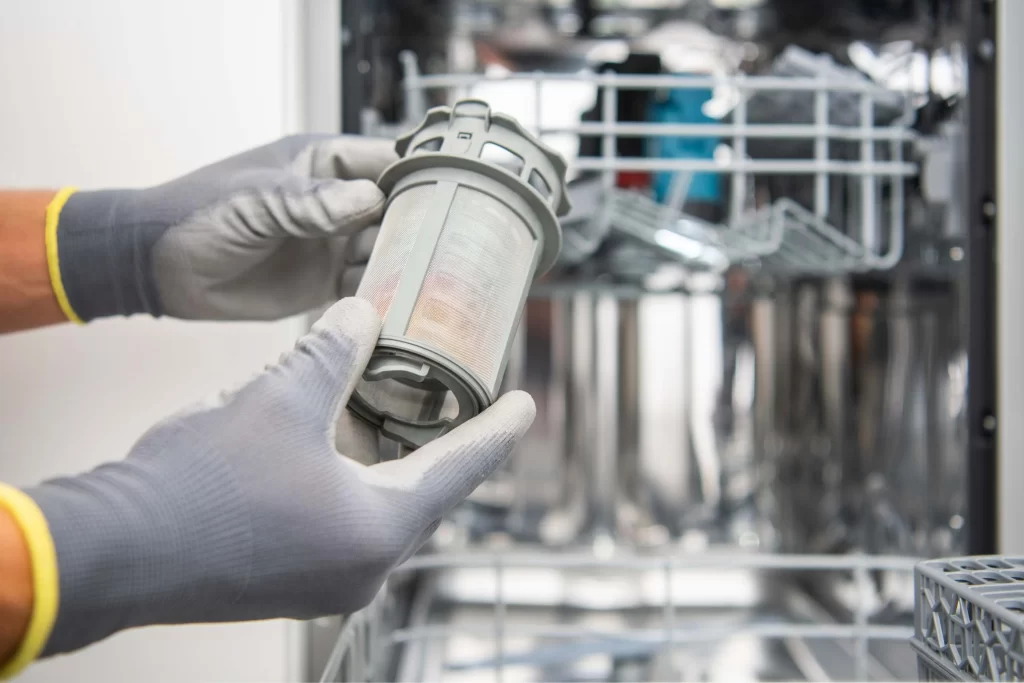
Final Thoughts
A dishwasher that won’t dry dishes may be a big pain. But you may quickly resolve the issue and have your dishes clean and dry with a little debugging and the correct advice. And never hesitate to hire a licensed appliance repair professional if you’re not comfortable fixing your dishwasher yourself.
FAQs
Try these tips for dishwasher drying and how to fix a dishwasher.
Make sure your water heater is at least 120 degrees.
Before you unload the dishwasher, leave the door slightly ajar for 5 to 10 minutes to allow any remaining steam to escape.
Unload the bottom rack first.
There are several reasons your dishwasher may not be drying your dishes properly: You’re loading the dishes incorrectly. You chose the wrong drying cycle setting. You didn’t add rinse aid.
It is typical for a dishwasher’s inside walls to be wet at the conclusion of a cycle; what matters is that the objects inside are dry. If they’re also moist, it might be any of the following: No rinse agent, brief cold wash, overloaded or improperly loaded, water heating issue, etc.
A dishwasher warms the water with an element at the bottom of the tub or a flow-through heater located at the machine’s base. If your dishwasher won’t heat up, it probably requires a new heating element.
Sources:
- How to fix a dishwasher that’s not drying
- Top Reasons Your Dishwasher Isn’t Drying
- Why Is My Dishwasher Not Drying Dishes?
- Solved! 4 Reasons Why Your Dishwasher Isn’t Drying
- Why Isn’t My Dishwasher Drying? Plus How to Fix It
- Why won’t my dishwasher dry my dishes
- My Dishwasher Won’t Dry The Dishes Anymore
- Newish Whirlpool dishwasher not drying.
- DISHWASHER NOT DRYING: 5 POSSIBLE CAUSES & FIXES
- WHY IS MY DISHWASHER NOT DRYING?
- GE Profile Dishwasher – won’t dry my dishes
- Bosch Dishwasher not drying dishes all the way
- Not Drying – Dishwasher
- Not Drying – Dishwasher
- Why Is My Dishwasher Not Drying? Five Issues to Consider
- Dishwasher is not drying
- Why is my dishwasher not drying?
- What To Do If Dishwasher Is Not Drying Dishes
For more kitchen tips, hacks, and advice:
- Creative Ways to Organize Your Paper Towel Drawer
- Maximize Space With Clever Above Fridge Storage
- Keep Your Cutting Boards Organized and Within Reach
- 8 Creative Kitchen Curtain Ideas Above The Sink To Add Flair
- How To Organize Your Kitchen Pantry – Step By Step
- How To Organize Kitchen Drawers – Step by Step Guide On Kitchen Drawers Organization
- How To Organize Kitchen Cabinets: A Step By Step Guide To Make a Small Kitchen Look Bigger
- How to Arrange Utensils in Small Kitchen – Ultimate Guide on Kitchen Utensils Organization Ideas
- Should You Remove Cabinets Over Your Fridge?